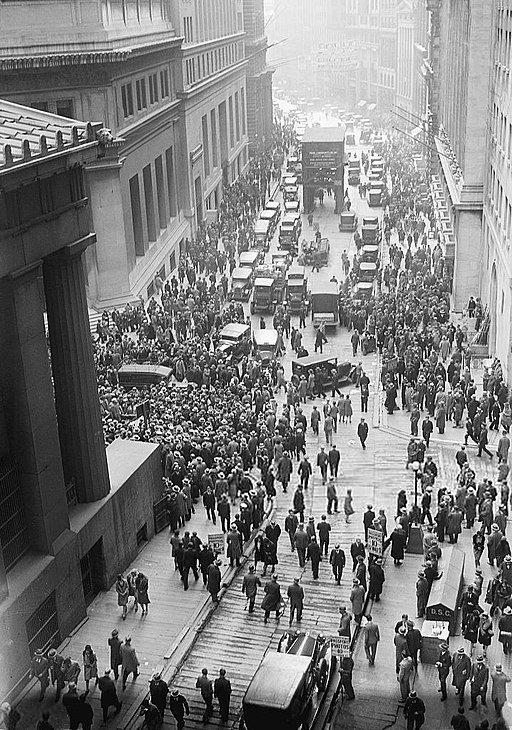Goehring & Rozencwajg: Commodities ‘may be the only’ safe haven during recession

Picture: Getty Images
- ‘History tells us that commodities could again be an excellent place to seek high returns’: Goehring & Rozencwajg
- Commodities now enjoying super-profits after years of underinvestment include lithium, coal, and oil and gas
- Which commodities could be next to run?
Investors anxious about recession should look to allocate cash into mining and energy stocks, which “may be the only thing safeguarding capital in the years to come”, according to New York fund managers Goehring & Rozencwajg.
Recession fears loom large amongst investors.
After 40 years of falling interest rates and rising equity prices, the pullback in both bonds and stocks have caught most investors off guard, Goehring & Rozencwajg say in their latest commentary.
“Equities and fixed income sold off simultaneously as investors began pricing in a period of both low growth and high inflation,” they say.
“The long beloved 60/40 portfolio (the industry standard in which an investor allocates 60% to equities and 40% to fixed income) experienced its worst six-month period in 40 years, wiping out trillions of dollars of value in only a few months.”
Are mining and energy stocks our only hope?
It is no wonder investors are wary about natural resource stocks, which are extremely economically sensitive.
Oil has pulled back almost 30% from its June high of $US120 per barrel, and copper — the metal which waxes and wanes with the health of the wider economy — suggests a global recession is looming.
Copper’s use in infrastructure and cabling means it is a good barometer of economic activity, so slowdowns in the global economy are expected to have a pronounced effect on the metal.
But offloading mining and energy stocks right now would be a mistake, Goehring & Rozencwajg say.
History shows us that the broader business cycle often doesn’t correspond with commodity bull and bear markets.
In fact, throughout the 20th century, resource equities have been good investments during most recessions.
The GFC was an anomaly here, they say. Heading into the GFC, the two cycles were in near-perfect alignment.
“While natural resource stocks collapsed during the Global Financial Crisis (GFC), commodity markets today bear no resemblance to 2008,” Goehring & Rozencwajg say.
“Investors using the 2008 GFC playbook risk selling commodities right at the bottom, missing the huge potential returns embedded in these markets over the coming decade.”
Case Study: The Great Depression

For most of the past 120 years, the commodity cycle and the business cycle have not been in sync at all.
The Great Depression of the 1930s, for example, was unrivalled in its severity.
“Wholesale prices collapsed by 30%, and the stock market fell 86% from its 1929 high,” Goehring & Rozencwajg say.
“Equities did not regain their pre-crash 1929 highs until 1954.
“Even factoring in dividends, anyone who invested in 1929 only broke even in 1946.”
And yet resources shone bright.
A simple portfolio made of equal positions in gold miners, oil producers, base metals miners, and agriculture companies made just before the stock market collapse in September 1929 more than doubled a decade later, they say.
“By comparison, at the end of the period in 1937 the total return of the S&P 500 was still down nearly 50%.
“By 1946, when an investment in the S&P 500 finally reached its pre-crash levels, the same natural resource equity portfolio had tripled.”
What is the natural resource capital cycle?
How could a portfolio of economically sensitive stocks lead the market during the worst economic collapse in history? The answer is the natural resource capital cycle, Goehring & Rozencwajg say.
A commodity price cycle usually follows a typical path.
One – The industry enjoys a period of very high energy or metal prices, resulting in a period of super-normal profits.
Two – These high returns attract new capital “and before long the industry begins a new cycle of exploration and development”.
Three – But, over time, this increased investment leads to new supply which eventually outpaces demand growth. This leads to a period of commodity surplus.
Four – Commodity prices fall, causing projects that were underwritten at higher prices to become mothballed and written off.
“Often, another industry or investment strategy falls into favor around this time and investors rush to reallocate capital towards hot new speculative areas, leaving the resource industry even more capital starved,” Goehring & Rozencwajg say.
Five – Supply then falters, demand grows, and – over time — inventory gluts eventually get worked off.
The stage is now set for the next bullish cycle to start.
This bull run could be bigger than the Great Depression

Look at the above chart. The radical undervaluation of commodities and commodity related equities is greater now than it was back in 1929, and the level of capital starvation is just as great, Goehring & Rozencwajg say.
“History tells us that commodities could again be an excellent place to seek high returns, even if the 2020s experience a period of economic turmoil as severe as the Great Depression — a scenario we consider unlikely.
“Investing in natural resource equities when commodities are cheap relative to financial assets is important, not only from a value perspective but also because it almost always corresponds with a bottom in the natural resource capital investment cycle — a cycle that produces years of supply shortages that is fixed only after years of increased spending.”
There are plenty of examples of this in 2022.
Commodities now enjoying super-profits after years of underinvestment include lithium, coal, and oil and gas.
Which commodities could be next to run? Years of underinvestment and a strong outlook make commodities like uranium, copper and nickel likely contenders.

UNLOCK INSIGHTS
Discover the untold stories of emerging ASX stocks.
Daily news and expert analysis, it's free to subscribe.
By proceeding, you confirm you understand that we handle personal information in accordance with our Privacy Policy.








